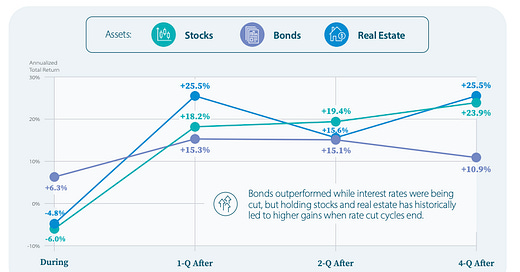A quick note before we jump in — We recently introduced a lifetime membership to Market Sentiment. A few of you contacted us regarding the pricing structure, and we wanted to make it clear to all our readers that you will only be charged $399 once and not $399 annually. Both free and paid subscribers can upgrade to lifetime membership (If you have time remaining in your subscription, the fee will be adjusted pro-rata)
Welcome back to the Simple Portfolio series by Market Sentiment. In this exclusive 5-part series, we are focused on finding and evaluating the performance of some of the best portfolios on the planet — but the best doesn’t have to be complicated.
In this #3 issue, we take a close look at the most popular portfolio on the planet — 60/40.
You don't have to be brilliant, only a little bit wiser than the other guys, on average, for a long, long time. – Charlie Munger
In the 1980s, the market for high-yield bonds (aka junk bonds) experienced a dramatic boom. This was fueled by new deregulations in the finance industry and an increasing appetite for corporate takeovers. The junk bond market grew exponentially from a minuscule $10 billion in 1979 to a whopping $189 billion by 1989 – with yields averaging around 14.5%!
Unsurprisingly, given the market conditions and high inflation of the 80s, investors were drawn to these high-yield junk bonds. Ben Trotsky was a bond manager working for Pacific Investment Management Company (PIMCO) during this time. Even though he was deeply skeptical about junk bonds, he devised a brilliant strategy for investing in junk bonds that he called “Strategic Mediocrity.”
In his job as a bond manager, he had to beat the benchmark to get investors interested in his fund. He was effectively competing with hundreds of other money managers who were playing the same game. They all got ranked from best to worst – every day, every year, every five years, and so on.
What Ben decided was this: He never wanted to be first in a particular year, because anyone who ever got the No.1 rank almost certainly got it because they did something reckless, tried really hard, or took really big swings. They must have taken too much risk and it worked out in their favor that particular year – but, luck eventually runs out. When he did simulations of various long-term scenarios, everyone who showed up in the top slot eventually dropped out of the long-term rankings. But, if you stayed among the top 1/3rd consistently for a decade, you would end up in the top 10% of fund managers in the long term.
That’s the beauty of Strategic Mediocrity. You never risk it all trying to generate the highest possible return in a given year. You play it safe, do well but not too well & try to be in the top 30% of the fund managers every year. That means not buying the scariest junk bonds that could have the biggest payoffs but going for one of the “barely” junk ones. While other fund managers were caught off guard by the collapse of the junk bond market in the late 80s, Ben was able to weather the storm and emerge as one of the most successful fund managers in history. PIMCO now manages more than $1.7 trillion in assets!
The closest idea to strategic mediocrity in the stock market would be the 60/40 portfolio. The idea is simple – you put 60% of your money in stocks (e.g. S&P 500) and the other 40% in bonds (e.g., 20-year U.S. Treasury bonds). It’s the safe, mundane way of investing without taking too much risk. By investing in both stocks and bonds, you improve your diversification and reduce the volatility of your portfolio. It is usually considered the gold standard for portfolios as it’s simple to build, robust in most cases, and provides adequate diversification.
The results back this:




